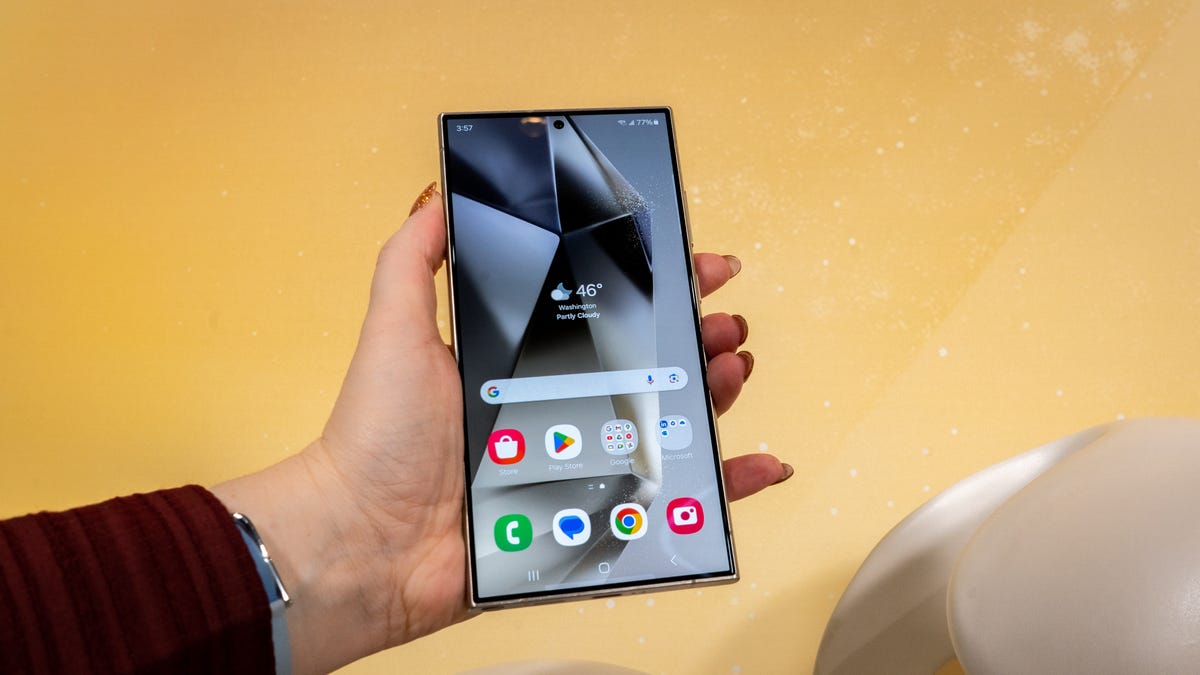Jokes on them, my S22 Ultra restarts in it’s own. Even when I don’t want it to.
It’s a feature! Device Failed Successfully.
This is gonna sound odd, but have you cleaned out the USB port lately? Weird stuff happens when pocket lint collects in there. I thought mine had a dead port until I picked out (with a non-conductive toothpick) the lint I didn’t realize had accumulated.
Sounds like my wife’s old Samsung phone as well… I’m sensing a common theme…
And my old note 4 too…
Really? My S22u is super stable. I don’t think it’s ever crashed. The current up time is 377 hours. But that’s only because of the 6.1 update a few weeks ago.
It’s a feature.

Android auto fails to load for me so often I’m pretty much restarting every day anyway
Replace your battery.
Your phone is 2 years old.
Phone batteries are typically designed to last around 2 years before they really degrade because a lot of people buy new ones around every 2-3 years.
When the battery can’t sustain the same throughput, the phone can handle this in one of two ways.
-
Slow the phone down. This is what Apple does and why people with iPhones 2 years old complain the new update slowed their phone down.
-
Don’t slow it down but if the throughput drops below what’s needed, die and reboot. This is what your phone is doing.
Getting a new battery will probably stop this behavior (and for iPhone users reading this, getting a new battery for a 2 year old phone will make your phone faster).
Edit: Seems some of you don’t believe me looking at the downvotes. Look at number 8 in this list: https://helpdeskgeek.com/help-desk/why-your-android-phone-keeps-restarting-and-9-ways-to-fix/
I have an s22 ultra as well, and it’s fine? Sounds more like they have some rogue apps causing the restart.
Didn’t really have much installed aside from revanced and Firefox
Half life is typically probabilistic.
You were lucky. They were not.
Doubt it but it is what it is. Have a nice night!
-
TL;DR:
Restarting your phone once a week can help improve performance and security.- this is the same for routers and it’s commonly known as a power refresh
Feels like I need to reboot my iPhone daily in order to keep applications and tabs from being terminated from out of memory issues as quickly.
I have an old-ass iPhone XS and don’t run into this issue. But mine has a LOT of storage so maybe that helps?
I wonder if the regular updates mine does count.
“you do need to restart your phone regularly to rid it of demons”
typo: “daemons”, not “demons”.
Miners. Not minors! (Galaxy Quest)
I use Tasker automation that reminds me to reboot after my phone has been up for awhile. I don’t think I’d like an auto reboot feature. I don’t even like it when I can’t postpone a software update until a time convenient for me.
Samsung phones have an option of scheduled autorestart; I have mine set to restart once every week at a scheduled time.
Wait…the NSA did something good. WTF.
Coming from the 9000 series, I am wondering what do you like about the 5700 series HAL?
My iPhone 13 mini‘s battery is so small that I involuntarily restart it at least once every two weeks
iPhone batteries are small in general. My GF’s iPhone se (don’t ask me which gen) barely lasted half a day, and took hours to charge. So a couple of years ago I bought her a Z Flip 3 for her birthday because all the girls in the Korean shows she watches had that phone at the time. Now her battery actually lasts a full day, and the phone charges to full in 45 minutes.
The larger iPhones easily last a day. The SE (any gen) are fairly small and thin and don’t have very large batteries. The 12 and 13 mini are also very small and thus don’t have much battery life. If you have a regular sized iPhone or even a Max, battery life is fine, on the bigger ones good even.
I’m just going to assume that you’re right because I know nothing about Apple devices and their capabilities.
Update your spyware regularly
I’m doubtful. I wanna hear more from security experts.
iphones just do weird shit after a while so that you can’t go on without a restart. truly smart
This is the best summary I could come up with:
Forbes uncovered a seriously dated NSA document outlining the best practices for keeping your phone safe from bad actors in the digital space.
The phones depicted are a 2010s-era iPhone with the original push-button Home button and a Samsung Galaxy smartphone.
Over a dozen tips are included, ranging from “considering using Biometrics” to “only use original charging cords.” It’s all fundamental stuff you’ve seen before, but the advice that’s got everyone’s ears perked up is the NSA’s suggestion to power your device off and back on weekly.
It’s a simple way to either force a waning software update or clear any background apps and memory leaks that might contribute to a too-hot-too-handle metal phone.
I’m a frequent restarter because I have cell signal issues in my area—a quick reboot usually does the trick, though not without my heart beating rapidly as I wait to see those mobile service bars return.
The Google Pixel doesn’t have a scheduled offering, but there is an option you can toggle on to have the device automatically restart once it receives an over-the-air (OTA) software update.
The original article contains 314 words, the summary contains 181 words. Saved 42%. I’m a bot and I’m open source!
Oh. I had a habit of taking the battery out of that laggy shit, then turning it on again.
GrapheneOS has an option to restart the phone after a given time without any successful unlock. I have it set to 8 hours, so it reboots every night. Shorter is possible.
A freshly restarted phone is in its safest state. Necessary to input the unlock code, strict minimum required processes running in the background.
You do it because it makes an attacker’s life harder because now I have to find two bugs instead of one.
The entire boot chain of the phone up to the apps you run are verified successively by the component that loads it. A digital signature helps ensure that only trustworthy code ever runs. A bug must be found to bypass these checks to load malware code. For example, a bug in the image code in a web browser might cause loading of code that isn’t checked. This way the malware gets smuggled onto the phone.
This means that if you get hacked via one bug and malware is loaded, the attacker has to work harder to solve the problem of how do I convince the phone to load it again at boot because the code it’s made of isn’t going to be approved code. When you reboot, you are effectively forcing a validation that all the code you have running is authentic, which would exclude the malware. Trick me once sure, can you survive a full pat down? Probably not. It’ll get caught.
Unless I have a second bug to fool the normal code loading systems too, the malware can’t run. You have to go back and trigger the first bug again somehow, which places more strain on the attacker.
Exactly, as you already explained in detail this is primarily for security.
GrapheneOS has a feature to set a time after which the phone reboots in case there was no unlock. So in case a bad actor gets your phone they only have that time with a running system after the first unlock. However, if you use it normally, and unlock it in regular intervals it does not auto-reboot. This is especially neat if your threat level is not “investigative journalist” or “political activist on the run”, because then you can set the time to a longer interval and the phone does not reboot every night when you are asleep which also leads to the SIM card being locked and nobody being able to call you…
I remember this feature, and I wish it was a standard Android feature. It sounds like it would be trivial to implement and could be completely optional.
I wonder if tasker could do it… 🤔
I don’t think applications can reboot the phone.
Technically they can…but it requires root which within the context of this conversation yeah, you’re right, lol













